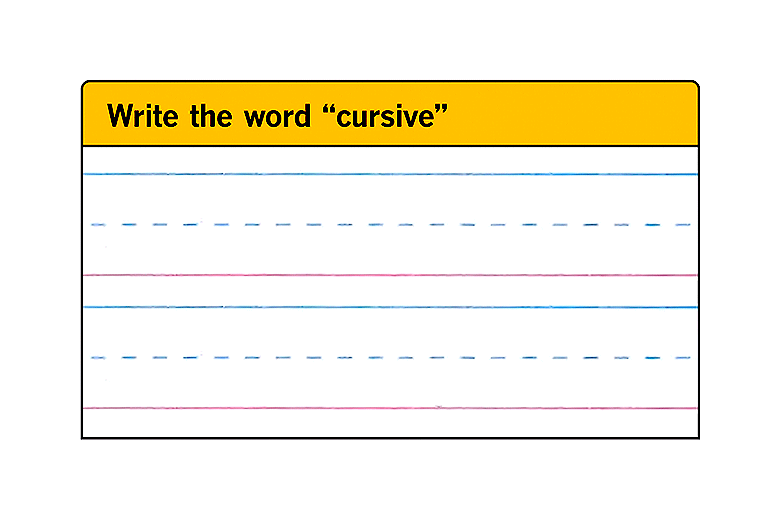those little lowercase letters are gaining the upper hand
- Share via
Since at least the invention of movable type, the reading public has relied on legions of eagle-eyed copy editors to differentiate Jimmy the short next-door neighbor from jimmy the short, curved crowbar.
Over the last few years, the trend of form over function has made lowercase all the rage, and, at least in some circles, capital letters appear destined for the graveyard of outmoded writing conventions. (Does anyone remember seeing handwriting samples from the 1700s with the ridiculous long “s” that looked like an “f”? It waf juft plain ftupid looking.)
An unscientific survey of newsstands, store shelves, streets and Web sites revealed that examples of this kind of topsy-turvy typography might be loosely divided into three categories: posers, hybrids and purists.
Posers can be found occupying the pricey real estate of magazine covers and Web site logos. They have jumped on the lowercase bandwagon as they would any passing trend. The sleek, lowercase logos of Talk and Glue magazines look laid-back on their covers, cozy even. But under the covers, these mags refer to themselves with the telltale initial capital. Old-fashioned companies affecting hipness this way is the typeface equivalent of a punk rocker wearing a Rolex.
According to Dmitryc Kirsanov, a Nova Scotia-based graphic designer who wrote the “typography” entry for webreference, a site devoted to Web design and instruction, the all-lowercase trend is heading for the design mainstream. “Most people are simply swayed by the wave,” said Kirsanov. “Those who make the choice consciously usually do because a lowercase logo seems more casual, more personal and less formal to them.”
And more eye-catching. The folks at the E.E. Cummings Society in Flushing, N.Y., say that the author’s name is properly--and legally--written with initial capital letters. What sticks in the mind, though, is all that lowercase tomfoolery.
Hybrids are, for the most part, titles and names that haven’t exactly ignored the rules but have just bent them a little. Two examples: iMac and eBay. (The Internet is crawling with e-this and i-that--eToys, eMachines, iWin.)
The hybrid, according to Kirsanov, is an even newer trend than straight lowercase design. It is based, he said, “on the patterns of everyday Internet communications, which tend to creatively abbreviate and economize on keystrokes.”
This “economy of writing” (why use the shift key if you don’t have to?) makes sense when you realize that on the Internet, (letter) size doesn’t matter. According to Pamela Brewster, spokeswoman for the Internet Corporation for Assigned Names and Numbers, which governs Web addresses, the domain name system is not case sensitive. As an example, LATimes.com, laTIMes.com or LatiMes.COM all take computer users to the same place (and it’s not a remedial English class).
Finally, there are the purists, lowercase zealots and dedicated fontanistas who take pride in making big statements with little letters. Not only do they adopt the lowercase look, they are lowercase in thought, word and deed. Example: the Los Feliz restaurant vermont. Co-owners Michael Gelzhiser (that’s a capital “G,” he likes to point out) and Manuel Mesta put a lot of thought into naming their Vermont Avenue eatery. “We wanted something straightforward and simple, very honest and no-nonsense, like the food we offer,” said Gelzhiser. “Visually, we liked the lowercase look.”
The quirky spelling even earned a mention in the 2000 edition of the Zagat restaurant survey, which describes the place as a “typographically challenged restaurant where the lowercase spelling belies an uppercase dining experience.”
(The Times respects those who wish to use all lowercase letters to spell their names but draws a line at names in all uppercase letters because, according to The Times stylebook, “of the inappropriate visual emphasis this provides”--unless the name is an acronym.)
Does all this typeface feng shui give the posers, hybrids or purists a leg up on their stodgy, properly punctuated counterparts? Time will tell. Wayne O’Neil, an MIT linguistics professor, noted that a century ago people were pretty “unsteady” about their capitalization, but since then, “you have a fixed notion . . . of how it’s supposed to look.” The proliferation of lowercase, he said, is “an attention getter. I suspect [it] will disappear when it no longer captures people’s attention.”
If lowercase is just a trend, expect a backlash. By next fall perhaps all the really chic words will be uppercase, or calligraphy or weird unpronounceable symbols. Maybe Prince was way ahead of the curve with that glyph thing.
More to Read
The biggest entertainment stories
Get our big stories about Hollywood, film, television, music, arts, culture and more right in your inbox as soon as they publish.
You may occasionally receive promotional content from the Los Angeles Times.











